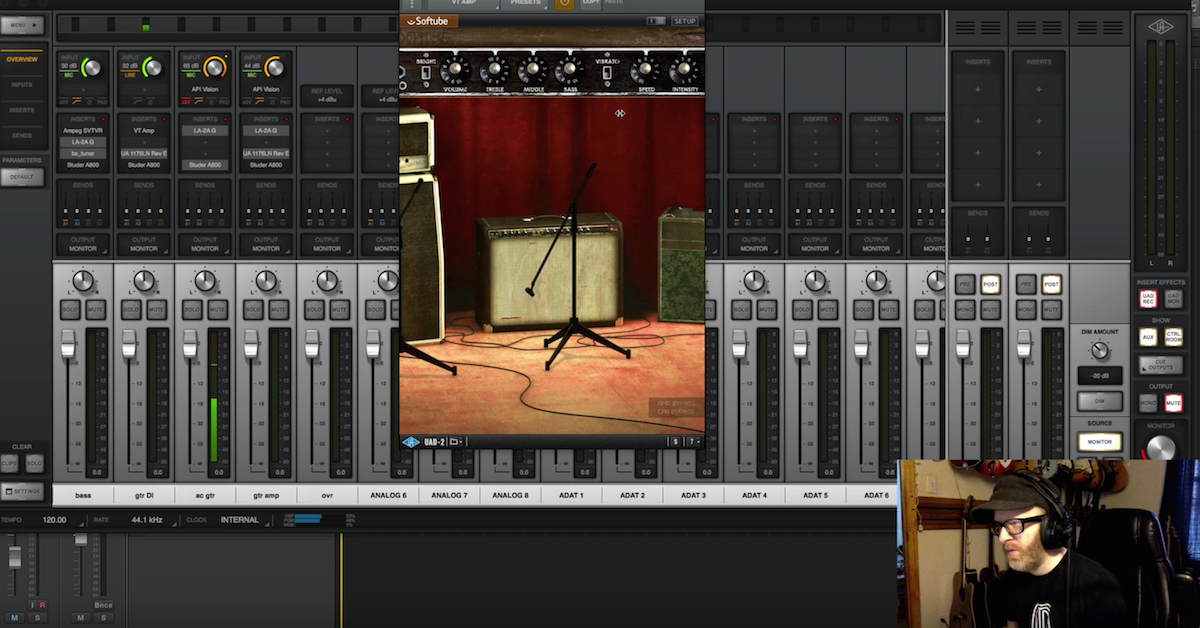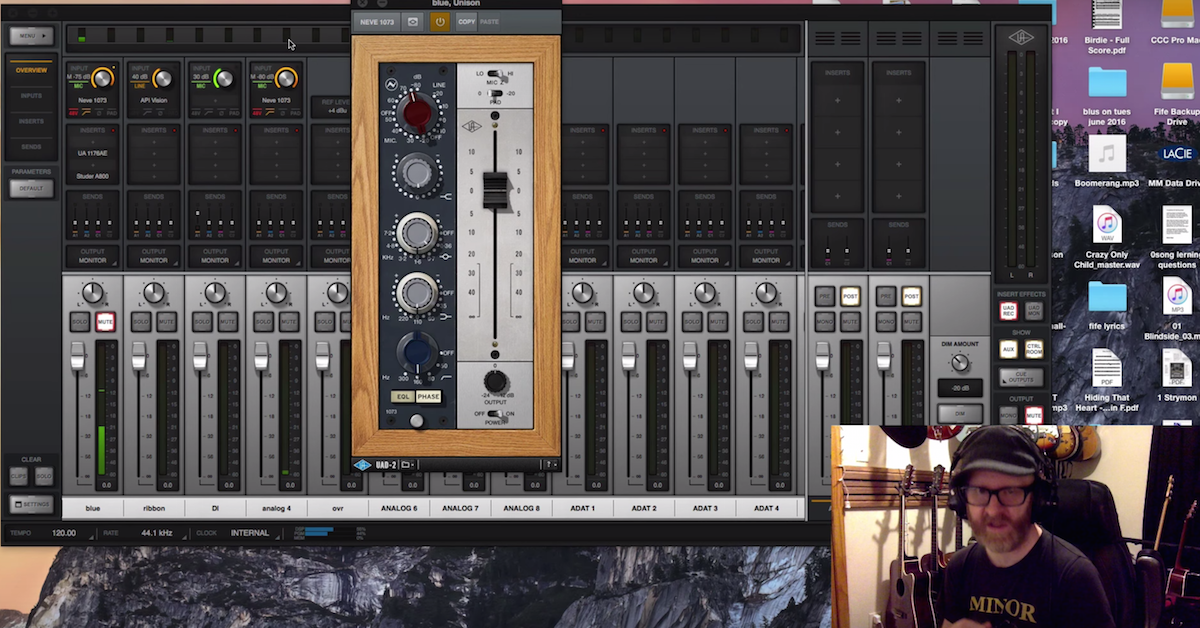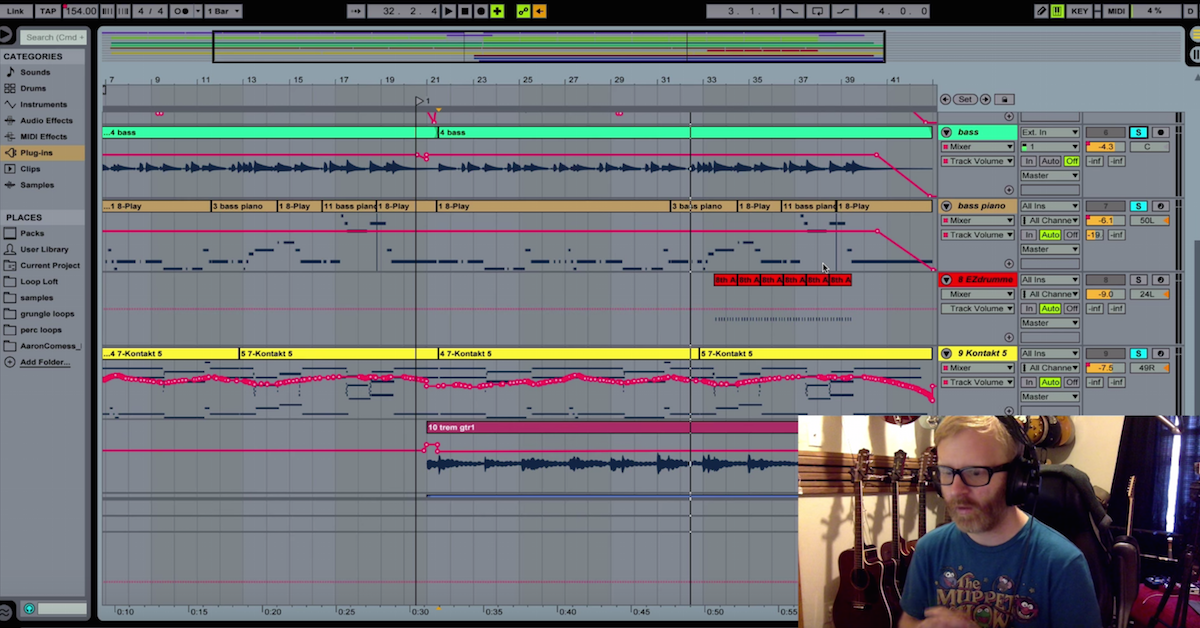Production Breakdown: Copperhead by Mark Marshall
They were looking for something in a little bit of the Chet Atkins style, and this particular season, they want things to be a little dirtier and grungier, so I knew that when I was composing, and more importantly recording this, that I was not going to go down the route of 100% traditional 1950’s tones, and I didn’t stray super far, but I just put a little bit more gain on the guitars so it was a little dirtier and slightly more modern.
Let’s listen to the song, and then we can talk about the elements that made it up.
[mix]
It’s a rather simple track, but as with simple tracks, the tones tend to mean a lot more, because they’re exposed.
Let’s start with the guitars, actually, because I think that this is obviously one of the foundations of the song.
I did it all with a Stratocaster, which is not traditionally the Chet Atkins or the go-to Country guitar. I just did that because I thought I’d want to have it in a slightly different tone than what everyone’s ears are used to when playing this type of music.
I ran that into a few pedals. I recorded a real amp for this. It just tends to be faster. Sometimes people think that using amp sims is just a faster way to record guitars, but I don’t find that to be true. I suppose maybe if you dig deep enough and if you create enough presets that you have all of your go-tos. It can speed things up.
But I find that it’s hard for me to have go-tos, because it changes. I do so many different types of music, I would have to have a pretty deep preset list.
Anyway, for this reason, sometimes, I setup an amp, and I record it, because putting pedals, an amp, and a microphone, that can often work a little faster as long as I’m recording at a time of day in my place where I’m not disrupting people.
For the amp, I use the Victoria 518, which is basically a Tweed Champ. It was designed — and I think it’s the same exact circuitry actually as a 1959 Champ, and some of you may know this amp as the Layla guitar amp, because it was the combination that Clapton used on that record, which was the Tweed Champ and a Fender Stratocaster.
I can get a lot of great, versatile tones out of this amp, and don’t let the eight inch speaker fool you, it can pack a wallop if you need it.
I discovered a cool trick recently using an EP Booster from Exotic Effects.
Now, this is pretty much the preamp section from an EchoPlex EP-3, and when I was using it with the amp, I didn’t really have the gain at much, I was more using it for the tone of the pedal. I have — on the inside — I have the dip settings both on so there’s the 3dB boost, and also the presence boost.
Now, the presence boost is actually kind of what’s important, because that combination with the Tweed Champ makes it sound incredibly close to the 5E3 circuit, which is the Tweed Deluxe.
Recently, I had the two back-to-back. I had the mid-50s Tweed Deluxe next to my Tweed Champ, and with that in series, it was kind of hard to tell the difference, except for some of the subtleties within the different sizes of the speakers. The Tweed Deluxe is a 12, and the Champ has an eight in it.
For the tape echo sounds, I used this Strymon El Capistan, which is my favorite pedal for capturing actual tape echo sounds, and that’s why sometimes, I pair these two together, because you have the preamp section from an EchoPlex, and they’ve done a really good job of capturing the essence of what a tape echo reacts like.
Some echoes, you’ll notice with plug-ins and pedals, they do a thing where they just roll off some of the high end and they call it a tape echo, but there’s so much more that goes into it. The way that the repeats fade out, and the way that they warble, and there’s so many subtleties, but this pedal does a great job at it.
In order to get a little grungier tone out of the guitar, I used this pedal from Effectrode. It’s a Tube Drive pedal. You see it has three tubes in it. It runs a high voltage. It runs almost at amp voltage, so it’s a powerful pedal, and it has a lot of headroom and it doesn’t compress in the same way that a lot of other overdrive pedals do. For that reason, I really like it, because it sounds like an amp that’s really being pushed.
It also doesn’t have the low end cut-off that a lot of overdrive pedals do. Not only do they compress it, but it also chops off a little low end.
Let’s start with the basic Travis picked guitar track.
[guitar]
I have a little bit of EQ on it. I use this Helios 69 a lot. It’s pretty much the Zeppelin EQ and the Rolling Stones EQ. It’s just really fantastic for guitars, what it can do to the high end and the mid-range. It just bumped a little bit here.
The Champ tends to be a little bit of a dark amp, so I also used a Fat Head ribbon with it, so I need to do some things just to kind of get a little bit more brightness into it.
Let’s listen to the second guitar part.
[guitar two]
Again, I boosted with the Helios 69 a little bit. During the guitar solo, you’re going to see that I didn’t really add any extra EQ.
Just a quick note about recording this guitar, I did use this API channel. This is not the settings that I used, because right now, I’m using this for the voice over, but I didn’t use any of the compression, and I just used a little bit of EQ, just to roll off some of the lows, and I believe I probably just pushed somewhere in the high frequencies, just to give it a little bit more presence.
But it’s pretty simple. I really like the API preamps for guitar. They just have a really great, fast attack and punch to them.
[guitar]
Going to hear a little of that single coil hum in there. There’s only so much you can do about that. I’ve tried hum canceling pickups or noiseless single coils, and you just lose something in the tone, so I kind of feel a little bit of the hum is okay, and honestly, it’s part of what we’re used to hearing with electric guitar.
Let’s check out what the drum groove is doing before we get to the bass.
[drums]
The drum groove came from Loop Loft, and their library entitled “Blues Drums.” A little bit based on the Bo Diddley kind of New Orleans vibe, but it really kind of worked well for this two beat Country thing.
I didn’t do any EQing to it, because it just seemed to sit well in the mix on its own, so we’ll just roll with it. I try to do as little as I can with a lot of these, partly because there’s such a fast turnaround, but also, I think in keeping it pretty natural sounding.
Let’s listen to the bass.
[bass guitar]
This counteracts with this second guitar part.
[guitar two and bass]
To create more variation in the second section of the song, I put in some tambourine and hand claps.
[mix]
[tambourines and claps]
If I had a lot more time to work with this production, I would have put in manual hand claps, but it’s not really time permitting with some of these TV projects, so I just used the EZ Drummer. Look at this, I didn’t even label these tracks right, and that’s a mistake, because later on, that’s the kind of stuff that can slow you down a little bit. Look at that, I’ll even spell it right. Spelling is important.
That’s the nuts and the bolts of the production. There’s not a lot of parts in it, because if you think of a lot of those late 50’s, early 60’s recordings of this type, there weren’t a lot of instruments on. Maybe I could’ve added some pedal steel or something, but for a 30 second spot, I just tried to keep it simple and kind of broad and organic.
As far as the buss goes, pretty typical of what I do nowadays, I just put this Ampex ATR on there from UAD, and then I just use Ozone. I have it on — this I chose the Modern Pop. I just switch through the presets until I find something that’s working, and then maybe make some subtle adjustments.





